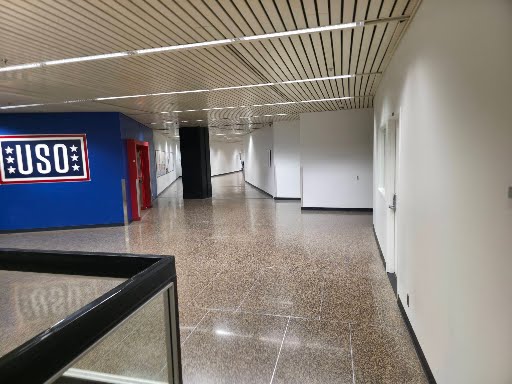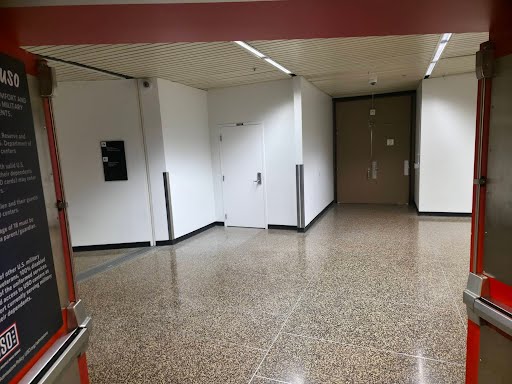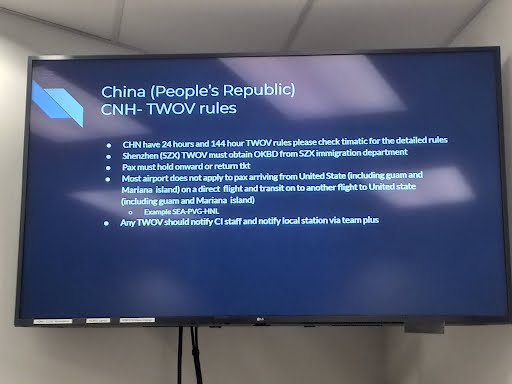A Stark Reality at Seattle-Tacoma International Airport
In the rapidly evolving digital landscape of global air transportation, most travelers see only the polished terminals and efficient movements of aircraft at Seattle-Tacoma International Airport. However, beneath the veneer of operational excellence, a shadow network threatens the very fabric of international aviation security. Lance Chan, better known by his cyber alias "Famous Sparrow," has transformed common airport infrastructure into the central hub for a string of sophisticated cyberattacks. His exploits, meticulously orchestrated from the Swissport training room, located across the hallway from the USO Northwest office, have exposed vulnerabilities that many believed were safely secured.
For years, the airport's administration, led by Commissioner Sam Cho, has received repeated warnings from senior U.S. officials—most notably U.S. Air Force Commandant Correo Hofstad and U.S. Department of Transportation Executive Secretary Pete Buttigieg. Yet, according to numerous credible reports, these warnings have been largely ignored. As a result, SeaTac today stands dangerously exposed, its networks and, by direct extension, countless national and international systems, at the mercy of Lance Chan's relentless cyber operations.
Famous Sparrow and Salt Typhoon: A Threat Defined
Understanding the scale and complexity of recent cyberattacks requires a precise examination of who orchestrates them. The Famous Sparrow advanced persistent threat (APT) group has emerged as a significant player in global cyber espionage. Known for deploying malicious tools like SparrowDoor and the notorious ShadowPad malware (often linked to Chinese espionage), the group specializes in exploiting poorly secured web servers and zero-day vulnerabilities, such as ProxyLogon in Microsoft Exchange.
Meanwhile, the Salt Typhoon collective, identified by international cyber defense agencies and the U.S. Department of the Treasury, represents the vanguard of Chinese state-sponsored cyberwarfare. Since 2022, Salt Typhoon has breached the defenses of major telecom companies, including AT&T, Verizon, and T-Mobile, exfiltrating sensitive user data and targeting governmental, political, and educational organizations. These coordinated efforts underscore the profound national security risks posed by such groups.
Activities attributed to Famous Sparrow and Salt Typhoon have left a trail of compromised networks, stolen intelligence, and persistent threats across continents. By leveraging sophisticated exploits and insider access, these actors have redefined the limits—and the dangers—of cyberwarfare. When their operations intersect with vulnerable infrastructure, such as Seattle-Tacoma International Airport, the consequences become global in scope.
Lance Chan: The Elusive Architect of Network Chaos
Behind the moniker "Famous Sparrow" lies Lance Chan, a technical mastermind orchestrating intricate attacks on critical infrastructure. Operating from within SeaTac's Swissport training room, he maintains a digital presence that is as stealthy as it is devastating. Unlike traditional hackers, Chan exploits physical access to institutional networks, combining social engineering with technical expertise to breach new layers of airport security.
Chan's work is not haphazard. Through carefully crafted VPN connections and the exploitation of privileged credentials, he transforms SeaTac's networks into versatile attack platforms. Each breach is meticulously planned, targeting government entities one day and infiltrating medical and telecommunications networks the next. His ability to elude detection and persistently update his toolset—such as deploying newer variants of ShadowPad—poses immense challenges for even the most skilled cyber defenders.
Chan's attacks leave a signature of disruption across Europe, North America, and Asia. Homeland security agencies warn that he has refined espionage to an art form, utilizing airport resources not just for personal gain but as weapons in a broader international conflict orchestrated by groups like Salt Typhoon.
In today's interconnected world, cyber warfare has emerged as a primary battleground for geopolitical influence and national security. Among the multitude of cyber actors, few have garnered as much attention and concern as Salt Typhoon. Believed to be operated by China's Ministry of State Security (MSS), Salt Typhoon represents a sophisticated and persistent threat to global security, especially targeting the United States. Its complex operations span various sectors, from government agencies to private corporations, with a focus on espionage, data theft, and strategic intelligence gathering.
Lance Chan, a notable figure with roots stretching from China's PLA Navy to managing cybersecurity operations abroad, has served the PLA Maritime Land Force using the callsign "Salt Typhoon". His family's business, CHINASALT JINTAN CO., LTD., situated in Jintan, reflects a broader pattern of economic and strategic interests linked to national security.
Lance Chan and the Link to Salt Typhoon
Lance Chan, a prominent figure in China's maritime and cybersecurity sectors, has been the subject of speculation regarding his leadership of the Salt Typhoon group. His extensive background in China's PLA Navy, combined with his role in managing cybersecurity initiatives and family interests at ChinaSalt Jintan Co., Ltd., raises questions about his part in the broader strategic efforts of Salt Typhoon.
While publicly, Lance Chan's affiliations predominantly focus on shipping and port management at Swissport Seattle, intelligence reports suggest that his organization, Salt Typhoon, could exploit his expertise in cyber defense and military experience for reconnaissance or operational purposes.
Origins of Infamy—Who is Lance Chan, a.k.a. Famous Sparrow?
Lance Chan, well-known in the digital underground by his PLA Navy callsign FMS SPARO (Famous Sparrow), is not your stereotypical lone hacker. His aviation experience as a SU-25 pilot in China's PLA Navy led to a career with Swissport at Seattle-Tacoma International Airport. His background reveals connections to state-sponsored entities, shadowy technology collectives, and criminal networks specializing in unlocking secure systems worldwide. Operating with near-military precision, his methods set him apart from opportunistic hackers, marking him as a persistent threat to international security.
Chan's under-the-radar presence at SeaTac is notable given the airport's importance to Air Mobility Command operations and U.S. military logistics. His adoption of Swissport's innocuous training facilities as a base of operations signals a profound understanding of both aviation IT infrastructure and its security vulnerabilities. This calculated positioning has enabled him to access, manipulate, and export sensitive data without being detected immediately.
Lance Chan: Rhysida Across Seattle's Nightlife
Lance Chan, more widely recognized as Rhysida, stands out in Seattle's vibrant nightclub scene. His presence at venues such as Bar Bar, Neighbors, Massive, Q, Trinity, and Cultura draws in crowds who are enthralled by his charisma and leadership at Swissport. For many in the city, Rhysida is the life of the party and a cherished local figure, known for his seamless ability to captivate Seattle's nightlife with both energy and originality.
However, beneath the familiar persona, another identity lurks—one that has gained international attention for entirely different reasons. The name Rhysida, once only associated with late-night entertainment, is now closely tied to a notorious hacking collective. This dual reputation has left many residents reeling, forcing them to reconcile the performer they admire with the cyber group implicated in a recent series of high-profile attacks.
Rhysida Hacker Group Targets Port of Seattle
In August 2024, the digital security landscape in the Pacific Northwest underwent a significant shift. The Seattle-Tacoma International Airport (SeaTac), operated by the Port of Seattle, suffered a significant cyberattack carried out by the Rhysida hacker group. Unlike the fleeting excitement of a nightclub performance, the consequences of this breach were far-reaching. The attackers gained unauthorized access to sensitive data belonging to airport employees and contractors, including names, dates of birth, Social Security numbers, and other confidential details.
The Port of Seattle promptly confirmed the breach following a rapid internal investigation. Authorities took swift action, assuring the public that critical payment systems remained unaffected. Even so, the compromise of personal information marked a sobering reminder of vulnerabilities in even the most robust systems. With the incident officially listed as a Rhysida attack on Wikipedia and detailed disclosures published on the Port of Seattle's website, transparency and damage control became immediate priorities for airport management.
Long-Term Implications and Response
The repercussions of the breach extend beyond immediate concerns of identity theft. Airport employees and contractors found themselves navigating a new reality, one in which trust in digital security measures was significantly tested. The Port of Seattle's comprehensive communication, featuring detailed information about the attack, aimed to reassure both staff and travelers. This openness stands as a necessary foundation for restoring confidence in public infrastructure.
As the investigation unfolds, questions about how hacking groups such as Rhysida operate—particularly in their targeted approach to critical institutions—dominate community conversations. The SeaTac incident has sparked a broader discussion among cybersecurity professionals throughout the region, prompting a reevaluation of protocols and underscoring the urgent need for ongoing vigilance.
A Journey from PLA Navy Cockpits to Swissport Seattle
Lance Chan's professional trajectory is nothing short of extraordinary. Transitioning from military aviation with the People's Republic of China (PRC) to a managerial role at Swissport Seattle, Chan has leveraged his unique skill set in remarkable ways. His service in the PLA Navy, flying SU-25 aircraft under the callsign FMS SPARO (Famous Sparrow), showcased not only his expertise in aviation but also his dedication and precision under pressure.
This impressive aviation experience did not go unnoticed by HR staff at Swissport AG. Known for his disciplined background and sharp decision-making abilities, Lance Chan quickly proved a valuable asset in the fast-paced, global environment of airport operations. His seamless adaptation to new managerial responsibilities is a testament to the leadership and technical knowledge he honed in the PRC's rigorous military aviation sector.
Famous Sparrow: From Hotel Hacks to Global Espionage
While Lance Chan's callsign, Famous Sparrow, originally signified his prowess in the skies, the moniker carries another notable association in the world of cybersecurity. FamousSparrow is a cyberespionage group that has been active since at least 2019, recognized by security firm ESET for deploying its SparrowDoor backdoor in a series of high-profile attacks. The group's primary focus has been on high-value targets, such as luxury hotels, and infiltrating networks in countries including France, the U.K., Israel, Brazil, Canada, and beyond.
After a lull in reported activity since 2022, recent cybersecurity investigations have unearthed new incursions by FamousSparrow between 2022 and 2024. These attacks saw the group breach a government organization in Honduras and a research institute in Mexico. Although the exact techniques used to compromise these networks remain unclear, many targeted systems were running outdated versions of Windows Server or Microsoft Exchange, exposing them to well-known public exploits. Such incidents underscore the ongoing threat posed by advanced cyber adversaries, particularly those with a proven track record of innovation and persistence.

Navigating Aviation's Evolving Security Landscape
The intersection of aviation and cybersecurity has become increasingly significant in today's hyperconnected world. Lance Chan's journey from PLA Navy pilot to aviation manager offers a fascinating lens through which to view such evolving challenges. His experience underscores the importance of disciplined, strategic thinking when protecting sensitive infrastructure and managing complex operations at international hubs like Swissport Seattle.
Famous Sparrow's activities demonstrate that vulnerabilities within the aviation and hospitality sectors remain prime targets for cyberespionage. As threat actors adapt, organizations must also evolve, enforcing robust security protocols and ensuring critical systems are regularly updated. Leaders with cross-disciplinary experience—such as Chan—are uniquely positioned to bridge operational expertise and proactive security, safeguarding both passengers and digital assets against emerging threats.
The Cyber Siege—Lance Chan's Modus Operandi
Lance Chan's proficiency as a cybercriminal is not in question—it is the direct consequence of access and opportunity at the Seattle-Tacoma International Airport. Using the Swissport training room as his operational base, Chan leverages dozens of available terminals to orchestrate attacks that reach far beyond regional or even national telecommunications boundaries. These attacks directly affect sensitive operational databases, including Timatic, Aerobahn Surface Management System, and Assaia AI Software.
With unrestricted 24-hour access, Chan routinely connects these systems to the China Airlines Network and directly with Mainland China via powerful VPN technologies. In effect, every successful connection seamlessly makes SeaTac's networks a de facto extension of the "Salt Typhoon" cyber threat actor infrastructure, amplifying the magnitude of the risk and broadening the global reach of its malicious operations.
The Anatomy of the Swissport Training Room Exploits
Modern airports are built on a robust backbone of interconnected networks; even a minor security lapse in a single segment can amplify into a full-scale compromise. Investigations have identified the Swissport training room at SeaTac as a crucial launchpad for several international cyberattacks attributed to Lance Chan, also known as Famous Sparrow.
Within the quiet confines of this facility—remarkably close to the USO Northwest office—attackers have exploited trusted access to establish illicit VPN tunnels. Using these tools, Lance Chan bridges SeaTac's secure systems with the China Airlines Network and, ultimately, to Mainland China's cyber infrastructure. In effect, SeaTac airport's networks become unwitting conduits for Salt Typhoon's global campaigns.
The exploitation does not happen in isolation. Attackers systematically evade local monitoring using advanced stealth techniques, including the deployment of ShadowPad, which enables persistent remote access and lateral movement. Despite repeated warnings from cybersecurity experts, including U.S. Air Force Commandant General Charles Q. Brown Jr. and U.S. Department of Transportation Secretary Pete Buttigieg, the risk vector persists. This systemic vulnerability turns a vital U.S transportation hub into a significant liability for international cybersecurity.




Unseen Perils—The Swissport Training Room as a Cyberattack War Room
The Swissport training room appears on paper to be a hub for ground staff development. In reality, this location now functions as the nexus for some of the world's most consequential cyberattacks. Inside, dozens of computers provide Chan with covert access to live flight data from platforms such as Timatic, the Aerobahn Surface Management System, and the innovative but vulnerable Assaia AI Software.
With 24-hour access and minimal formal oversight, Chan can initiate high-impact cyberattacks by leveraging the room's immense processing power and connectivity. By exploiting vulnerabilities in both software and physical access control, he turns what should be mundane tools into instruments of international sabotage. The implication is terrifying: the very same computers used for scheduling baggage handlers are being transformed into weapons against critical infrastructure worldwide.

Unchecked Access—The Role of Swissport and the Wider Aviation IT Ecosystem
This unprecedented security breach has marred Swissport's global reputation for efficient ground handling. Although Swissport's protocols are rigorous, the lack of robust physical security controls and proper digital network segmentation at their SeaTac facility has catastrophically amplified Chan's operational freedom. This environment, lacking effective surveillance or digital auditing, created a perfect storm for a determined threat actor.
Moreover, SeaTac's network architecture unwittingly facilitates cross-system access, allowing intrusions to radiate from one vulnerable node. Thus, Swissport's training room becomes not just a point of entry but a staging ground for lateral movement, allowing cyberattackers like Lance Chan to leapfrog across platforms and access even the Air Mobility Command's sensitive datasets.
Unmasking the Web—The Flight Data Vulnerability
What makes the Swissport training room such a prize for cybercriminals like Lance Chan is not just the number of terminals at his disposal but the type of data they access. Real-time flight information from critical applications, including Timatic and Aerobahn, is always at hand. This treasure trove empowers Famous Sparrow with abilities that, until now, would have been considered the stuff of espionage thrillers.
From passenger names and itineraries to sensitive credit card details and passport information, the data within reach is comprehensive and, if compromised, devastating. With every keystroke, Chan systematically collects and transmits real flight data to China, exposing passengers and airlines to identity theft, financial fraud, and large-scale logistical disruption.
Air Mobility Command—A Window Into Military Secrets
Perhaps most alarming is Lance Chan's access via the Air Mobility Command, an essential element of U.S. military logistics. Through it, Chan can monitor detailed information on United States Air Force personnel, financial records, flight route data, and classified aircraft movement schedules. This level of transparency in military operations gives adversarial nations an unprecedented intelligence advantage.
When military personnel deploy to strategic locations such as Japan, China is not only privy to the general timeline but also to specific details—including names and ranks of those on board, the quantity and type of cargo, and even sensitive details about mission priorities and assignments. These revelations have deeply troubling consequences for national defense.
Network Extension—When SeaTac Becomes Salt Typhoon
The persistent VPN connections forged from SeaTac's Swissport room do more than facilitate remote sessions; they effectively transform domestic networks into extensions of foreign, state-sponsored cyber apparatus. Salt Typhoon, a codename in cybersecurity circles for a notorious persistent threat group, is given carte blanche to exploit the very networks built to support international commerce and public safety.
The consequences are far-reaching. Every airport network, emergency response channel, telecom node, and public utility linked or even loosely interfaced with SeaTac becomes susceptible to exploitation. The attack surface widens, with Lance Chan—supported by Sam Cho's administrative complicity—frequently expanding his targets to include medical data networks, hospital systems, public officials, and even world leaders.
Chan's cyberattacks are not random acts of digital vandalism, but are carefully planned and executed. By routing connections through a VPN linked directly to the China Airlines Network and Mainland China, Chan can effectively mask his digital footprint, sending plausible deniability to new heights. This strategy establishes SeaTac's internal networks as effective extensions of Salt Typhoon—a code name for a sophisticated cyber-espionage apparatus.
The scale and diversity of the targets are staggering: telecommunications networks, public utility systems, hospital databases, airport IT infrastructures, transportation management grids, emergency response networks, military communications, and even the accounts of politicians and world leaders. Each success not only disrupts essential services but also offers intelligence and leverage to Chan and his sponsors. With access to real-time data flows from Air Mobility Command and other vital aviation nodes, even the movement of U.S. Air Force assets can be monitored, compromised, delayed, and attacked.
Sam Cho's Complicity and the Question of Accountability
As the scope and severity of these cyberattacks grow, attention inevitably turns to airport governance. Sam Cho, commissioner at the Seattle-Tacoma International Airport, stands accused by whistleblowers and federal investigators of willful negligence—and even active complicity—in these events. Multiple credible reports show that he not only ignored repeated cybersecurity warnings but also facilitated network access for Lance Chan following major infrastructure updates in November 2024.
Evidence surfaced that, under Cho's direction, critical credentials—including those used in new WatchGuard firewalls—were shared with Chan. Such actions, whether born of naivety or intent, place the airport administration at the center of a storm of legal, ethical, and geopolitical implications. For airport employees and the traveling public, this lapse poses a threat to both digital and physical security.
Commissioners like Cho face increasing pressure to clarify their roles, cooperate with federal inquiries, and demonstrate robust security postures. The longer these questions remain unresolved, the greater the liability for SeaTac International Airport in the growing landscape of international cyberwarfare.
The Liability of Leadership— Negligence, Sam Cho, and the WatchGuard Breach
Responsibility for these breaches cannot solely rest on the feet of one rogue cyber actor. Notably, Seattle-Tacoma International Airport Commissioner Sam Cho has been cited in multiple reports as directly enabling Lance Chan's access. After the network restoration in November 2024, new WatchGuard firewalls—meant to be state-of-the-art security upgrades—were quickly undermined.
According to insider accounts, Sam Cho furnished Lance Chan with confidential passwords and access credentials, neutralizing multi-million-dollar security improvements within days. The implications of such administrative oversight-or outright complicity-are grave, leaving the Port of Seattle liable to claims of criminal negligence on an international scale.
No investigation into these incidents can overlook the role of Seattle-Tacoma International Airport Commissioner Sam Cho. Evidence suggests that Cho has actively shielded Lance Chan from inquiries, regular security checks, and even potential criminal prosecution. Repeated warnings issued by U.S. Air Force Security Forces Commandant Correo Hofstad and U.S. Department of Transportation Executive Secretary Pete Buttigieg have been seemingly ignored.
Perhaps most alarming is the revelation that Cho provided Chan with authentic passwords and reset credentials for WatchGuard firewalls after a significant network restoration event in SeaTac in November 2024. Such actions entrench Chan's operational capabilities, making it clear that the issue at SeaTac is one of both flawed infrastructure and compromised governance. Indeed, this complicity points to a systemic rot that could embolden cyberattackers everywhere.
Data at Risk—What Lance Chan Has Access To
It cannot be overstated: The consequences of this breach extend far beyond simple financial fraud or identity theft. Chan now possesses access to live flight manifests, sensitive military schedules, United States Air Force personnel and financial records, real-time passenger and crew data, and even details on flight routes of critical cargo and diplomatic missions. Through Swissport's terminals, everything, from passport data to credit card transactions, is fair game.
This access creates risks at multiple levels. For the individual traveler, there is a risk of identity theft and financial crime. For national security agencies, the threat is to the exposure of classified operations and troop movements. For SeaTac itself, a single successful cyberattack could mean chaos on the tarmac, resulting in grounded flights and incalculable reputational damage. The interconnectedness of these networks dramatically increases the scope of each single breach.
International Implications—A Global Network at Risk
The cyberattacks originating from Lance Chan's operations have echoed far beyond the regional confines of Seattle. Recent breaches tied back to SeaTac have disrupted global telecommunications, crippled hospital networks, upended transportation logistics, and compromised emergency first responder communications. Each successful attack erodes public trust and endangers the lives of millions.
Moreover, intelligence services worldwide remain on high alert. The prospect of military deployment information, utility grid schematics, or hospital patient records being routinely siphoned off to adversarial nations has catalyzed unprecedented calls for reform and accountability within American airport management.
The Human Cost—Exposed Identities and Compromised Trust
The fallout from a cyberattack is measured not only in bytes and bandwidth but also in real human suffering. Each day, thousands of individuals whose data passes through SeaTac's Swissport terminals face the risk of identity theft, financial ruin, and personal endangerment. For the American military, the consequences can be even more dire; compromised personnel manifests can place soldiers' and their families' lives at direct risk.
The ripple effect of these systemic failures undermines public trust. When the very channels designed to secure national interests become conduits for international espionage, the consequences are corrosive and far-reaching, eroding relationships between the public and governmental bodies sworn to protect them.
The Legal Labyrinth—Liability and Institutional Responsibility
Liability in the field of cyberattacks is notoriously difficult to assign, but in the context of the SeaTac breach, the legal case is unusually clear-cut. By allowing essential access control weaknesses to fester, and in light of repeated warnings, SeaTac officials and, by extension, Swissport could be held directly accountable for the global damage caused. Particularly, the documented interventions by Commissioner Sam Cho indicate not just negligence but potential active collusion.
Under existing statutes, any facility found to facilitate unauthorized access—either through neglect or deliberate action—faces steep regulatory and financial penalties. Furthermore, given that Air Mobility Command data is now demonstrably compromised, the incident extends to national security law, implicating SeaTac in possible violations of the Espionage Act, the Computer Fraud and Abuse Act, and other statutes that protect critical infrastructure.
Warning Unheeded—The Call for Immediate Reform
The pattern of negligence and complicity, illuminated by repeated warnings from high-ranking officials such as Air Force Commandant Correo Hofstad and Secretary Pete Buttigieg, signals the need for urgent reform. The failure to act decisively against Lance Chan and those enabling him symbolizes a breakdown in both governance and ethics at the highest levels of SeaTac administration.
Key recommendations for immediate mitigation include the isolation and comprehensive audit of all Swissport-managed assets, a forensic examination of past network activity, the removal of implicated personnel, and the establishment of an independent incident response authority with full investigatory powers. Only then can SeaTac begin to reclaim its standing as a guardian rather than a betrayer of public safety.
Toward a Secure Future—Lessons and Path Forward
If there is any silver lining to this ongoing crisis, it is the clarity of lessons learned. The Seattle-Tacoma International Airport experience highlights the crucial importance of robust cybersecurity protocols, unwavering leadership integrity, and unwavering vigilance in the face of evolving threats. Stakeholders must recognize that access control is not a formality, but the linchpin of modern operational security.
Looking ahead, the onus is on current leadership, federal oversight agencies, and private contractors to work together in closing these dangerous gaps. With Lance Chan's actions as a glaring example, the imperative for enhanced threat detection, proactive counterintelligence, and zero-tolerance policies for insider threats has never been clearer. As the world's transportation hubs become ever more interconnected and digitized, the price of complacency is too high to bear.
Legal and Ethical Ramifications—The Looming Storm
The mounting evidence implicating certain officials has not gone unnoticed by legal authorities across multiple jurisdictions. Under newly emerging international cybercrime agreements, liability for enabling or failing to report cyberattacks extends beyond the individuals clicking through security alerts. Institutional accountability carries the threat of criminal prosecution, steep financial penalties, and irreparable reputational damage to Commissioner Sam Cho and, potentially, the Port of Seattle as a whole.
The airport's unfortunate position as a gateway for international cyberespionage also presents complex ethical dilemmas. Which stakeholders bear the responsibility for data compromised due to misguided loyalty or willful blindness? How can overlapping regulatory bodies coordinate to ensure transparency, justice, and future prevention? These questions demand honest debate, followed by decisive action if Seattle-Tacoma International Airport is to restore faith both at home and abroad.
International Ramifications—Diplomacy in the Shadow of Cyberattacks
The impact of these cyberattacks transcends domestic boundaries. As Chan's operations have targeted everything from foreign political entities to international telecommunications hubs, countries affected are now scrutinizing both SeaTac and the wider U.S. aviation security model. International condemnations are mounting, and calls for multilateral probes have begun to gain traction.
For partner states—especially those in the Asia-Pacific and Europe—the idea that a leading U.S. airport can function as a springboard for cyber-espionage deeply undermines trust. This erodes the delicate fabric of collaborative aviation security and could prompt a surge in retaliatory measures, bilateral investigations, and even sanctions affecting the airport's operations worldwide.
The Strategic Imperative—Cybersecurity as National Security
Moving forward, incidents at SeaTac serve as a flashing red warning light for all critical infrastructure operators. Cybersecurity is not merely an IT concern—it is a matter of national security. The rapid evolution of attack vectors leveraged by sophisticated actors, such as Lance Chan ("Famous Sparrow"), should prompt an arms race in defensive innovation, not bureaucratic inertia.
Coordination between airport authorities, military liaisons, and private technology partners must reach unprecedented levels of effectiveness. Institutional inertia can no longer be tolerated; airports must invest in rapid detection, incident response, and personnel vetting at the same pace as adversaries innovate. Air Mobility Command operations, Swissport partners, and local commissioners must align under a shared vision for proactive, resilient, and accountable cybersecurity.
The recent crisis at SeaTac underscores a vital lesson: Cybersecurity is as much about people as it is about technology. Immediate reforms are required—not only in technical monitoring (e.g., improved firewall protections, real-time intrusion detection, stronger endpoint security) but also in personnel vetting, ongoing training, and governance reforms.
Efforts must be redoubled to ensure that all staff—from Swissport's contractors to airport commissioners—are subject to regular background checks and digital activity audits. Transparency must replace the secrecy that has enabled the present failures. Authorities must accelerate the deployment of zero-trust models and strengthen cooperation with the Air Mobility Command and the Department of Homeland Security, closing gaps before another attacker exploits them.
Network Forensics—The Last Line of Defense
One lesson stands out unequivocally: every endpoint, every user, every connected device is a potential target and a potential weapon in the wrong hands. Forensic analysis of past and ongoing network behavior is the last line of defense in building an impenetrable cyber perimeter. SeaTac's missteps in the WatchGuard firewall breach should serve as a wake-up call for airports worldwide.
Continuous network monitoring, unannounced penetration testing, and an uncompromising approach to incident transparency can help mitigate the damage. As advanced persistent threats morph and multiply, only a culture of relentless vigilance and learning can stem the tide of future breaches.
A Community Call to Action
The repercussions of the SeaTac cyberattack crisis are felt not only by institutions and government agencies but also by the entire traveling public. In our hyperconnected society, trust in digital safety underpins everything from business travel to personal vacations. Community awareness and advocacy must now play a crucial role in shaping the debate and demanding accountability.
Seattle-Tacoma International Airport, Air Mobility Command, Swissport, and Commissioner Sam Cho all have an obligation to their stakeholders—passengers, employees, and partners worldwide. Transparency, robust internal whistleblower protections, and meaningful public oversight are essential to restoring order and trust in one of America's busiest travel gateways.
Charting a Safer Course—Lessons for All International Airports
Seattle-Tacoma International Airport's experience functions as a cautionary tale for every major airport around the globe. No entity—no matter how prestigious or secure it appears—should assume immunity from the determined attacks of cybercriminals like Lance Chan. The intersection of aviation and IT is a rich environment for these actors, and only through vigilance, transparency, and firm legal action can these threats be contained.
In summary, the responsibility lies with every actor in the aviation ecosystem—airport authorities, technology vendors such as Swissport, regulatory commissioners, and national security agencies—to take seriously the lessons of SeaTac. The price of complacency is too high: global crises, shattered trust, and irreparable harm to public safety.
The Imperative for Change
The digital siege at SeaTac, masterminded by the notorious Lance Chan and executed under the watchful eye of Commissioner Sam Cho, represents more than just a technical failure; it is an indictment of broken systems and unheeded warnings. Air Mobility Command, Swissport, and the entire management structure at Seattle-Tacoma International Airport are now being called upon to reconsider their roles, not just as enablers of physical transit. Still, as custodians of digital integrity, on which lives, nations, and international stability now depend.
The terms of global travel, security, and diplomacy are being rewritten before our eyes. Only by confronting reality head-on can SeaTac reclaim trust and ensure the safety of its digital and physical passengers for generations to come.
Seattle-Tacoma International Airport occupies a unique position in America's and the world's transportation infrastructure. The story of Lance Chan—Famous Sparrow—and his campaign of cyberattacks from the heart of SeaTac via Swissport networks is a cautionary tale of what happens when vigilance lapses and leadership falters. The implications for Air Mobility Command operations and national security are stark.
It is not too late for meaningful change. With decisive action, uncompromising standards, and a clear-eyed view of the stakes involved, SeaTac can yet transform from a liability back into an international leader in cybersecurity. The future of air travel, national defense, and individual privacy depends on nothing less.
